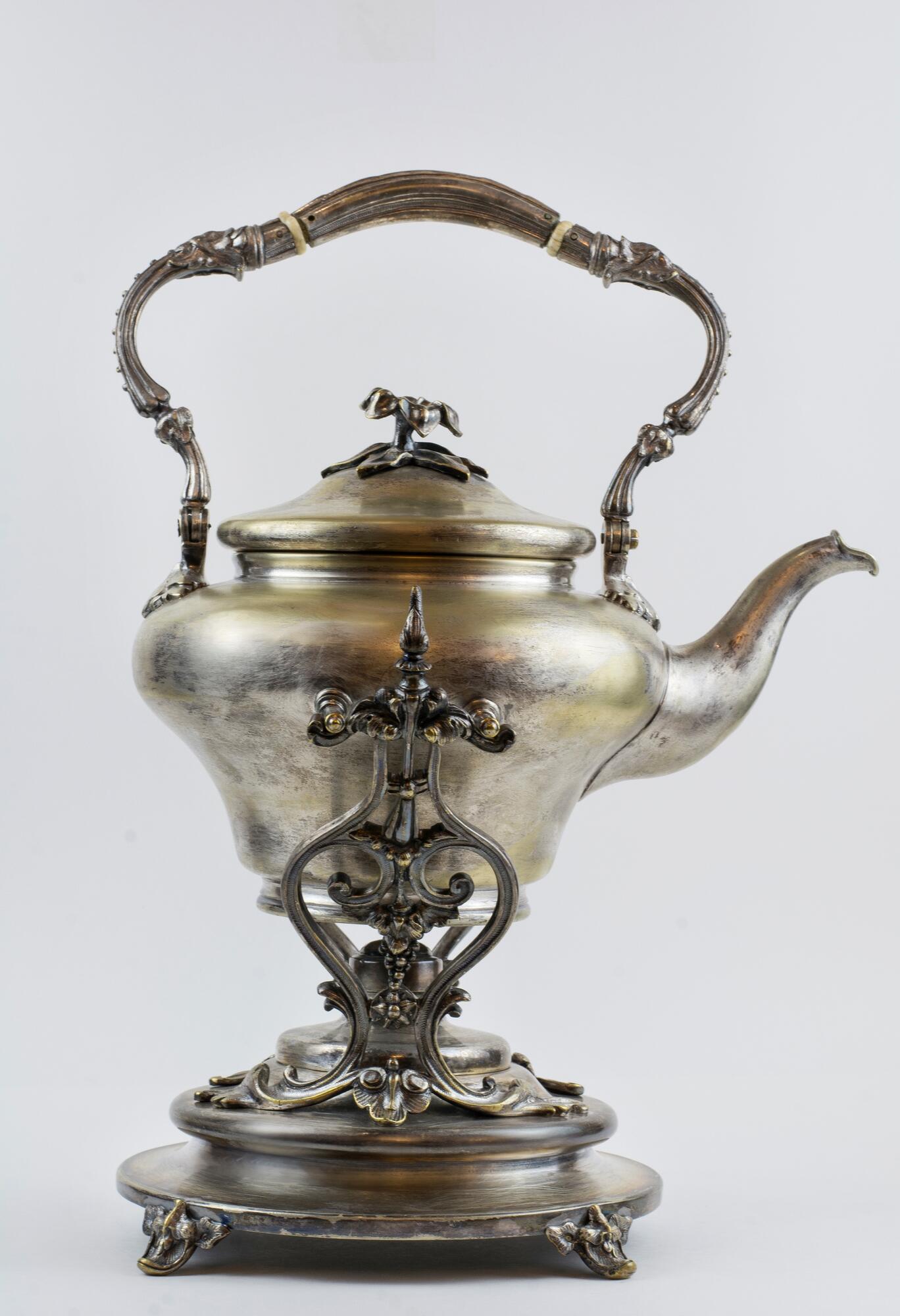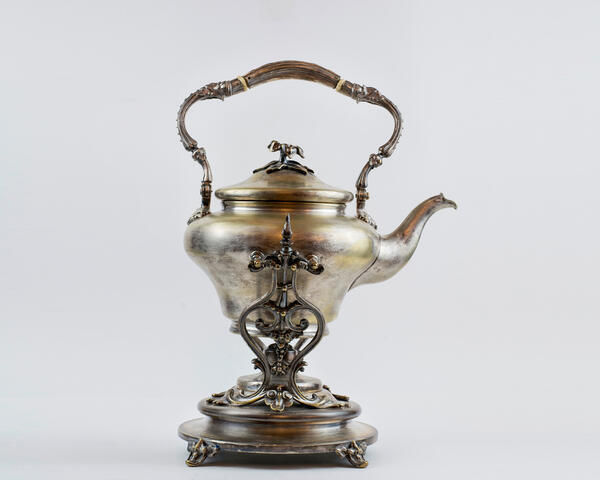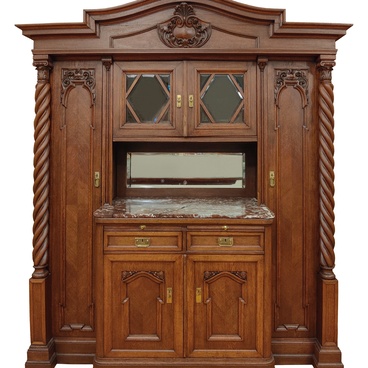A bouillotte is a small metal kettle with a spout or drain tap. In the olden days, it was placed over a kerosene or spirit burner.
In Russia, bouillottes began to be made in the 18th century. Firstly, they were used to heat water during campaigns. Since the 1760s, under Empress Catherine II, they became a supplement to the samovar and a sign of luxury. Such teapots were used, as well as samovars, during tea parties — but with their help water was not boiled, but its temperature was maintained, because bouillottes had no internal fire.
Samovars were massive, they were heated with wood or coal in kitchens or courtyards, and not very heavy bouillottes were put right on the table. Thus, in noble families they gradually replaced samovars and became a compulsory addition to silver tea sets.
Shapes and decorations of the bouillottes varied greatly. Masters made them with straight and bent elements, in the form of animals and birds, cones, teapots and steam trains, painted with geometric patterns and floral ornaments.
Bouillottes were used until the 20th century. Over time, they were replaced by decorative porcelain teapots, which were heated by candles.
The origin of the bouillotte, which is in the museum’s collection, can be determined by the stamp of the manufacturer. This is a heraldic medallion with the crown of the Russian Empire. It bears the initials of the manufacturer “A. K.”, which stands for “Alexander Kach”. Nearby, there are two faces in profile, and there are letters “GP” between them. They mean that the product is plated — a thin film — for strength and luster.
Alexander Kach, the owner of the firm indicated on the stamp, moved to St. Petersburg from Prussia. He became one of the first factory owners in Russia to produce cupronickel and nickel silver — an alloy of copper, nickel and zinc. In the 1840s, at the corner of Nevsky Prospect and Mikhailovskaya Street, in the house of the European Hotel, Kach opened a store, and the factory was located in the building of the Catholic Church of St. Catherine.
Kach’s firm produced and sold items of silvered cupronickel: from simple spoons to richly decorated samovars. They were much cheaper than silverware, but not inferior in quality. In the 19th century, cupronickel pieces were very popular among the nobility and merchants.
Kach died in 1873; he was buried in Berlin. After his death, however, the firm did not close. Historian Ali Osmanov wrote:
In Russia, bouillottes began to be made in the 18th century. Firstly, they were used to heat water during campaigns. Since the 1760s, under Empress Catherine II, they became a supplement to the samovar and a sign of luxury. Such teapots were used, as well as samovars, during tea parties — but with their help water was not boiled, but its temperature was maintained, because bouillottes had no internal fire.
Samovars were massive, they were heated with wood or coal in kitchens or courtyards, and not very heavy bouillottes were put right on the table. Thus, in noble families they gradually replaced samovars and became a compulsory addition to silver tea sets.
Shapes and decorations of the bouillottes varied greatly. Masters made them with straight and bent elements, in the form of animals and birds, cones, teapots and steam trains, painted with geometric patterns and floral ornaments.
Bouillottes were used until the 20th century. Over time, they were replaced by decorative porcelain teapots, which were heated by candles.
The origin of the bouillotte, which is in the museum’s collection, can be determined by the stamp of the manufacturer. This is a heraldic medallion with the crown of the Russian Empire. It bears the initials of the manufacturer “A. K.”, which stands for “Alexander Kach”. Nearby, there are two faces in profile, and there are letters “GP” between them. They mean that the product is plated — a thin film — for strength and luster.
Alexander Kach, the owner of the firm indicated on the stamp, moved to St. Petersburg from Prussia. He became one of the first factory owners in Russia to produce cupronickel and nickel silver — an alloy of copper, nickel and zinc. In the 1840s, at the corner of Nevsky Prospect and Mikhailovskaya Street, in the house of the European Hotel, Kach opened a store, and the factory was located in the building of the Catholic Church of St. Catherine.
Kach’s firm produced and sold items of silvered cupronickel: from simple spoons to richly decorated samovars. They were much cheaper than silverware, but not inferior in quality. In the 19th century, cupronickel pieces were very popular among the nobility and merchants.
Kach died in 1873; he was buried in Berlin. After his death, however, the firm did not close. Historian Ali Osmanov wrote:



